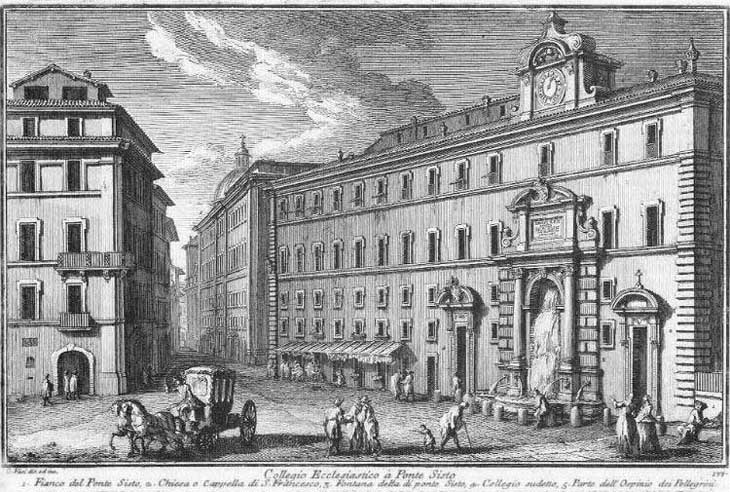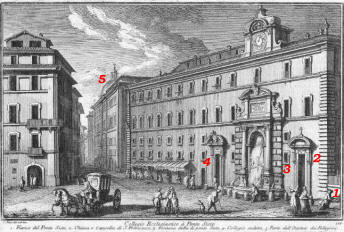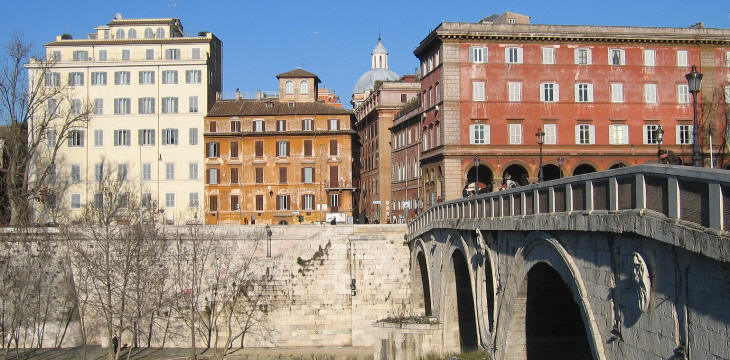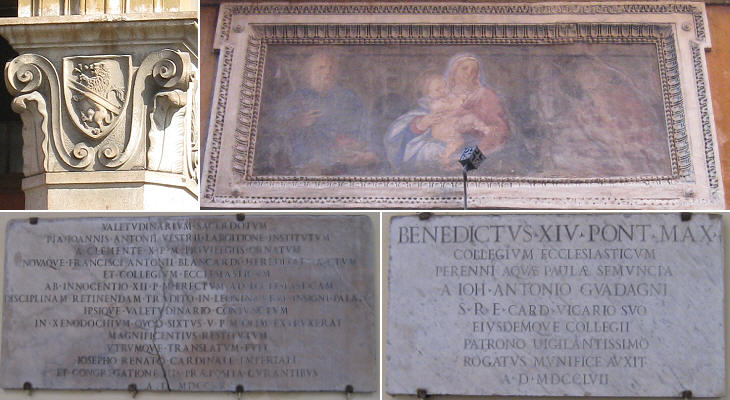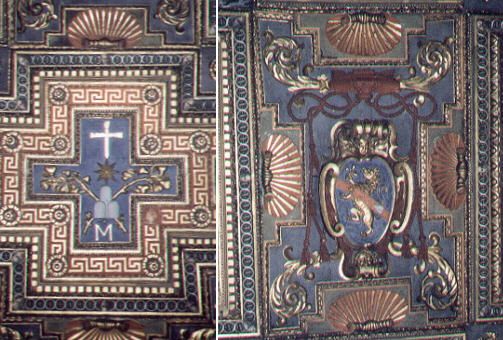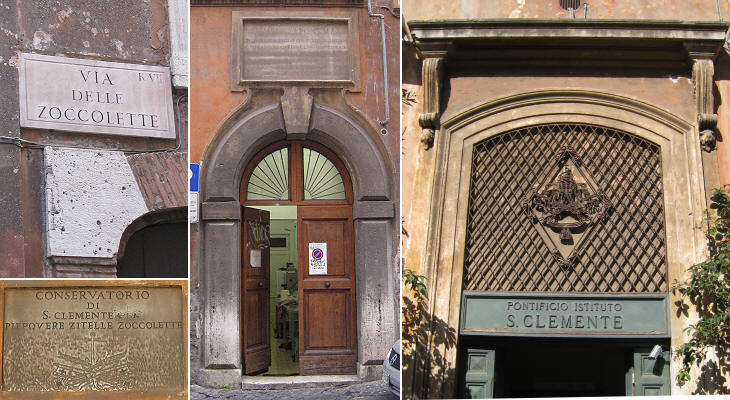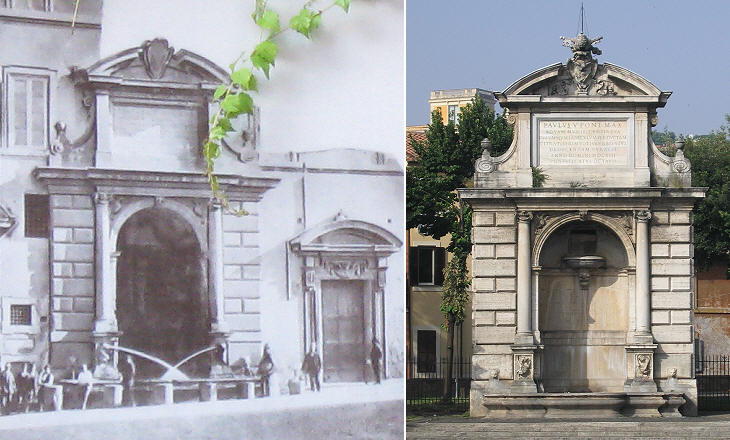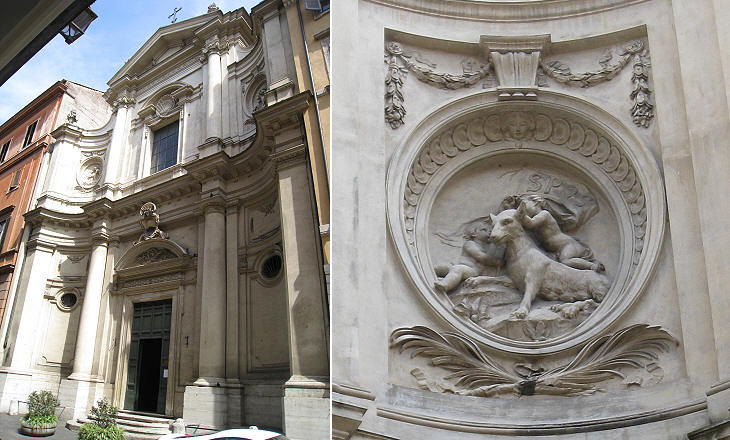  What's New! Detailed Sitemap All images © by Roberto Piperno, owner of the domain. Write to romapip@quipo.it. Text edited by Rosamie Moore. Page revised in March 2010. |
Collegio Ecclesiastico a Ponte Sisto (Book 9) (Map C3) (Day 7) (View D8) (Rione Regola)
In this page:
Giuseppe Vasi called Collegio Ecclesiastico this large palace, because at his time it housed old and poor members of the clergy, but the building was best known as Ospizio dei Mendicanti, because it was built by Pope Sixtus V to keep beggars and tramps off the streets; it was located very near Ponte Sisto and it was designed by Domenico Fontana. The palace was embellished with an elegant clock; the fountain was added by Pope Paul V in 1613. The view is taken from the green dot in the 1748 map below. In the description below the plate Vasi made reference to: 1) Part of Ponte Sisto; 2) Cappella di S. Francesco; 3) Fontana di Ponte Sisto; 4) Collegio Ecclesiastico; 5) Dome of SS. TrinitÓ de' Pellegrini. 1) and 5) are shown in other pages. The map shows also 6) S. Caterina da Siena and 7) Conservatorio delle Zoccolette.
In the late XIXth century high walls were built on the river banks to avoid floods; Lungotevere, roads along the river, were built to facilitate traffic and Ospizio dei Mendicanti was reduced in size and given a new fašade with porticoes; the new design is typical of some cities in northern Italy such as Turin and Bologna, but it does not fit in the Roman urban context. Ospizio dei Mendicanti
Pope Sixtus V provided the institution with a chapel dedicated to S. Francesco; it had also an independent entrance to the right of the fountain; the chapel was pulled down in 1885; its fine wooden ceiling decorated with the heraldic symbols of the pope was moved to S. Caterina della Ruota.
Conservatorio delle Zoccolette
At the beginning of the XVIIIth century Pope Clement XI moved part of the beggars housed in the building to
S. Michele a Ripa and used the resulting empty space
for a new institution aimed at helping young women "in danger". They were provided with clogs (It. zoccolo)
so their home became known as Conservatorio delle Zoccolette.
In 1613 Pope Paul V built a large fountain designed by Giovanni Vasanzio which brought the water of Acqua Paola
to Rione Regola. In 1879 the fountain was dismantled and in 1898 it was rebuilt on other side of Ponte Sisto. The image used as background for this page shows a detail of the fountain (for similar strange faces see a page on the laughing masks of Rome).
In nearby Via Giulia there
are several national churches (click
here for a list of national churches in Rome). Siena was an independent Republic until 1557,
when it was conquered by Cosimo I de' Medici who with this annexation became the Grand Duke of Tuscany. The merchants and bankers from Siena who lived in Via Giulia from the XVth century however continued to support a separate brotherhood (from that of the Florentines) and in 1775 they renovated their church which was dedicated to St. Catherine of Siena. The design of the new building
by Paolo Posi is an interesting example of late baroque style.
Excerpts from Giuseppe Vasi 1761 Itinerary related to this page:
Next plate in Book 9: Chiesa delle Stimmate di S. Francesco Next step in Day 7 itinerary: Chiesa della SS. TrinitÓ e Ospizio de' Pellegrini Next step in your tour of Rione Regola: Santi Vincenzo e Anastasio alla Regola |
